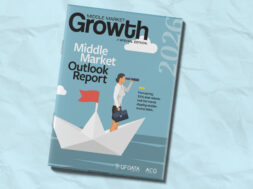Does Your Building Know ‘WattTime’ Is Best for Its Carbon Footprint?
California-based WattTime uses software to help building operators make more sustainable choices about energy consumption.

Don’t flip that switch—yet. Despite high-tech advances in building controls, most businesses don’t have a handle on how their energy use correlates to environmental impact.
That’s the premise behind Oakland, California-based WattTime, a nonprofit deploying software-based technology to help building operators make more sustainable choices about energy consumption.
“We detect in real time where (electricity) is going to come from and what the emissions are going to be,” says Gavin McCormick, WattTime’s co-founder and CEO.
He says many commercial energy users don’t realize that electricity is delivered from a variety of power plants, depending on the time of day. WattTime combines real-time data from power grid operators, the Environmental Protection Agency and other sources to find times when energy use will have a lower carbon footprint.
Still in its nascent phase, WattTime in June became a subsidiary of the Rocky Mountain Institute, a larger nonprofit focused on helping companies, communities and other organizations shift away from fossil fuels to renewable energy. A partnership with Microsoft allows the software to run on Azure, the tech giant’s cloud-based platform.
WattTime’s pilot sites include buildings at UI LABS, a Chicago organization advancing smart-city technologies, along with Princeton University, Harvard University and other academic institutions.
“We detect in real time where (electricity) is going to come from and what the emissions are going to be.”
Gavin McCormick
Co-founder & CEO, WattTime
McCormick says universities and Fortune 500 companies are the first targets; users start with a free trial and then pay a variable cost, based on the size of the organization.
“Companies that want to use more sustainable energy can get it with a click plug-and-play software solution,” says McCormick, 33, a former Ph.D. candidate in economics at UC Berkeley.
WattTime is McCormick’s first foray into business. He developed the concept about three years ago during a hack-athon event in San Francisco where participants created environment-focused software apps. WattTime now has seven employees and a growing team of volunteers.
“The paper I was working on at the time was nine years in the making,” McCormick says. “The first version of Watt took nine hours.”
This edition of Quick Takes originally appeared in the March/April 2018 issue of Middle Market Growth. Find it in the MMG archive. For more information about WattTime, email contact@watttime.org.

Deborah L. Cohen is former editor-in-chief of Middle Market Growth.


